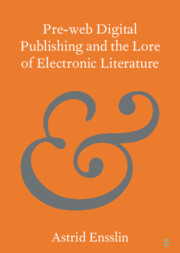Element contents
Pre-web Digital Publishing and the Lore of Electronic Literature
Published online by Cambridge University Press: 10 March 2022
Summary
- Type
- Element
- Information
- Online ISBN: 9781108903165Publisher: Cambridge University PressPrint publication: 31 March 2022

